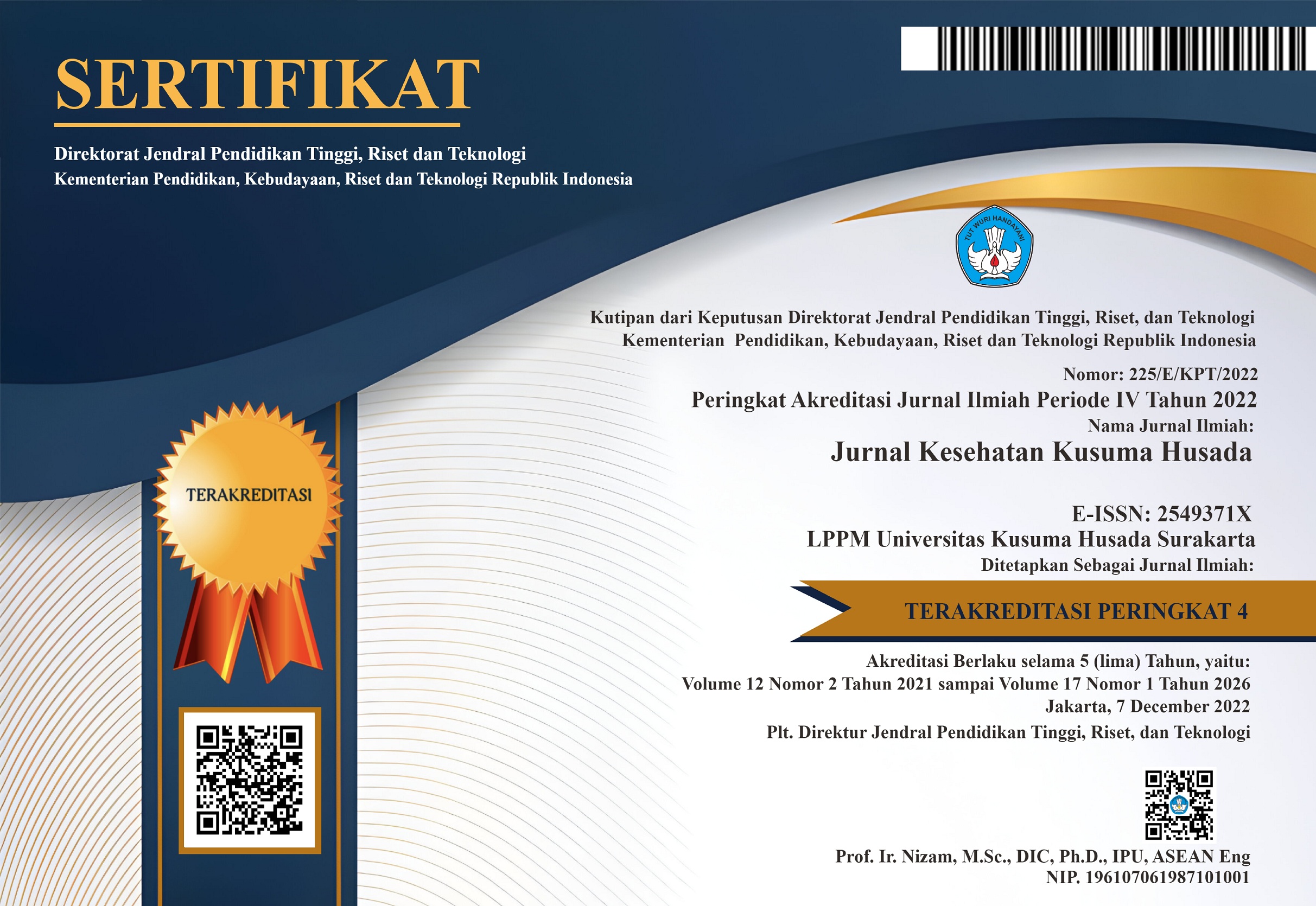POTENSI EKSTRAK DAUN SALAM (SYZYGIUM POLYANTHUM) SEBAGAI PENGAWET PADA IKAN LAYUR (TRICHIURUS SP)
DOI:
https://doi.org/10.34035/jk.v8i2.228Keywords:
ikan layur, ekstrak daun salam, kadar protein, Angka Lempeng Total, fish layur, bay leaf extract, protein levels, total plate countAbstract
Ikan layur merupakan salah satu sumber protein hewani yang banyak dikonsumsi masyarakat. Pengawetan dengan metode penggaraman tidak direkomendasikan karena beberapa bakteri dan jamur masih dapat bertahan hidup dan tidak baik dikonsumsi oleh penderita hipertensi. Tujuan penelitian untuk mengetahui pengaruh penggunaan ekstrak daun salam sebagai pengawet pada ikan layur. Penelitian berdasarkan analitik eksperimental meliputi pemeriksaan kadar protein metode Kjedahl dan pemeriksaan Angka Lempeng Total metode cawan agar tuang di Laboratorium Chem- mix Pratama Yogyakarta. Penelitian dilakukan dengan perendaman ikan layur dalam ekstrak daun salam dengan variasi konsentrasi yaitu 0%, 3%, 5%, 7% dan 9% selama 15 menit. Semakin tinggi konsentrasi ekstrak daun salam maka semakin tinggi pula kadar protein ikan tetapi hasil Angka Lempeng Total mengalami penurunan. Analisis data menggunakan uji Spearman dan diperoleh pengaruh antara sampel dan kadar protein dengan tingkat hubungan sangat kuat dengan arah korelasi positif (r = 0,947). Terdapat pengaruh sangat kuat antara sampel dan Angka Lempeng Total. Sampel ikan layur yang direndam dengan ekstrak daun salam dalam konsentrasi 7% lebih banyak disukai anelis dari segi tekstur, aroma dan rasa. Ada pengaruh penggunaan ekstrak daun salam sebagai pengawet pada ikan layur.
Layur fish is one source of animal protein that is widely consumed by the public. Preservation by salting method is not recommended because some bacteria and fungi can still survive and not be consumed by people with hypertension. The purpose of this study was to determine the influence of the use of bay leaf extract as a preservative in fish Layur. The research is based on the experimental analytic sudy of the examination of protein levels and inspection methods Kjedahl, total plate count in order to pour plate method in Chem-mix Pratama Laboratory Yogyakarta. The research carried out by soaking the fish in the bay leaf extract with various of concentration is 0 % , 3 % , 5 % , 7 % and 9 % for 15 minutes. The higher concentration of bay leaf extract, the higher protein content of the fish but the results of total plate count decreased. The data were analyzed by the Spearman test and gained influence between the sample and protein level with the aim of positive correlation (r = 0.947). There is also a strong influence between the sample and the total plate count. Layur fish samples were soaked with bay leaf extracts in concentrations 7% more preferred by the panelists in terms of texture, smell and flavor. There is the influence of the use of bay leaf extract as a preservative in fish Layur.
Downloads
Published
Issue
Section
License
The copyright of the published articles belongs to Jurnal Kesehatan Kusuma Husada.

This work is licensed under a Creative Commons Attribution 4.0 International License.
















